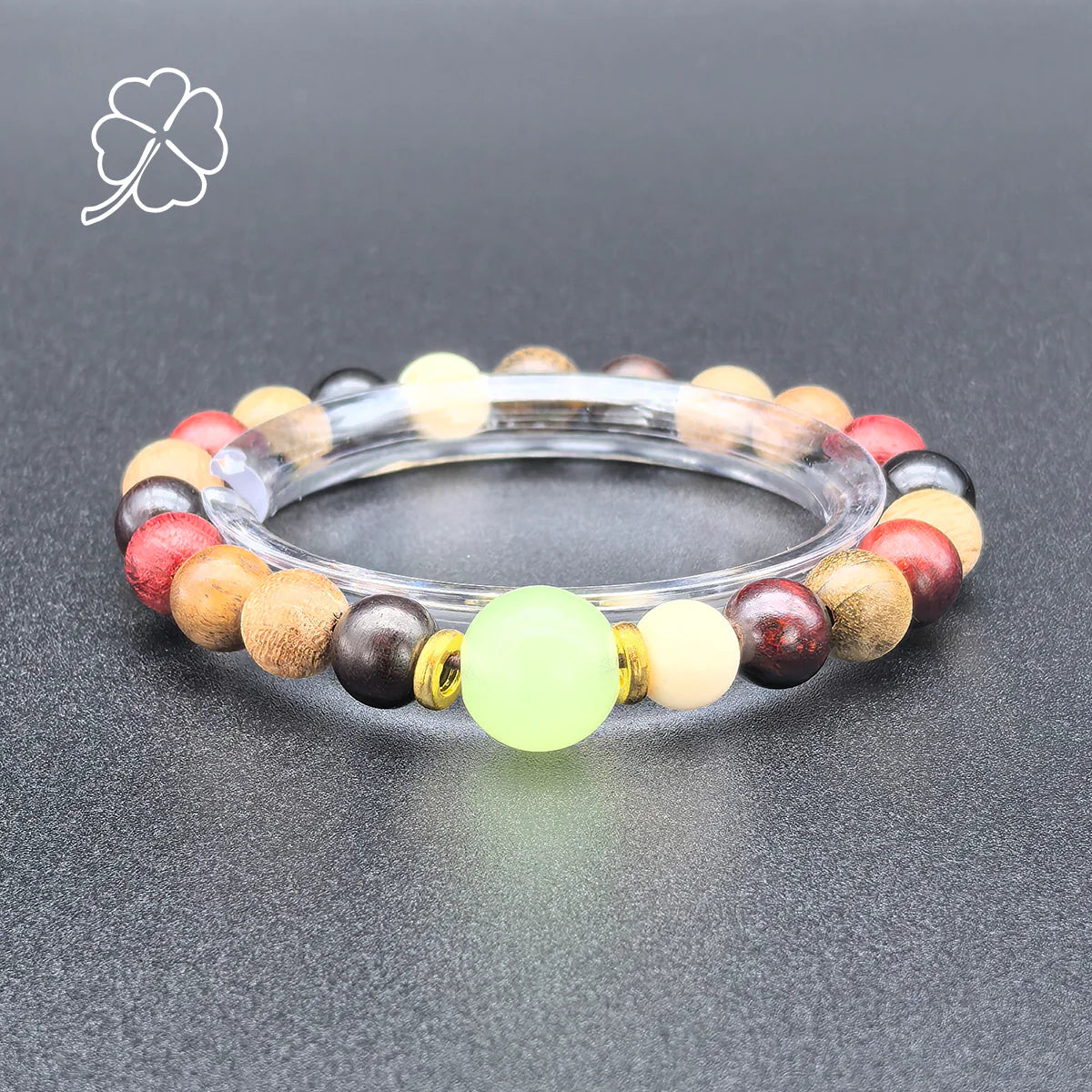Buddhist mala beads, more commonly referred to as mala beads, carry more spiritual significance than mere ornamentation. Rooted deep within Buddhist practices and philosophy, their significance runs deeper still - from symbolicizing wisdom, compassion, spiritual awakening to serving as meditation tools in traditional settings. Once used exclusively as such tools for meditation practice they now stand as powerful symbols of faith that help remind practitioners on the path toward enlightenment. This guide explores their history, materials used, cultural associations as well as an in-depth examination of these sacred objects for deeper insight and an in depth understanding.
Historical Background
Bead bracelets were first employed as meditation aids by monks of ancient India; known as mala in Sanskrit, these beads served to count mantras or breaths during practice to assist practitioners and help deepen spiritual practice.
Buddhist scripture has had an enormous influence on the variety and materials used for beads. Early texts reference specific materials like seeds and wood as possessing spiritual properties believed to aid meditation and spiritual growth, with mala beads used across Asia using materials reflecting local cultures and environments.
Over centuries, Buddhist practices have expanded beyond using beads made solely from seeds to include beads made of various materials that carry their own symbolic significance and carry different layers of meaning. Today's beads come crafted from precious woods, seeds, stones and even human bone - reflecting both physical and spiritual worlds in Buddhist beliefs.
Types of Materials Used in Buddhist Bead Bracelets
Sandalwood
Sandalwood is one of the most beloved materials used in Buddhist bracelets, revered for both its pleasant aroma and cultural/medical benefits. Sandalwood can also be used as an aid to meditation by helping to bring tranquility. In Buddhist practices, sandalwood has also been linked with increased spiritual concentration and an enhanced connection with divine. It is used in bead bracelets made out of sandalwood to ensure an even deeper spiritual experience for its wearers.
Sandalwood holds great symbolic meaning in Buddhism, where it is frequently burnt as incense to cleanse the atmosphere and invite positive energies. Furthermore, bead bracelets crafted of sandalwood symbolize clarity, mindfulness and spiritual purity.
Agarwood
Agarwood, prized for its fragrant qualities and exquisite scent, is another material often utilized in Buddhist bead bracelets. Agarwood forms when an Aquilaria tree becomes infected with certain types of mold that produces resin with an aromatic scent; this resinous wood is highly prized across cultures for both spiritual and therapeutic uses - something Buddhism takes seriously as well.
Buddhist rituals rely on agarwood incense to purify both mind and body, helping practitioners reach a higher state of awareness. Bead bracelets made of agarwood symbolize spiritual purity as well as meditation's transformative powers; making this beaded material an excellent choice for deepening one's spiritual practice.
Rosewood
Rosewood, commonly referred to as "Emperor's Wood," occupies an important place in Buddhist culture. Not only is this dense dark wood revered for its durability and aesthetic value, but its spiritual significance as well. Rosewood is associated with the heart chakra in Buddhism - symbolizing love, compassion, and healing.
Rosewood beads used as bead bracelets may help the wearer cultivate compassion and kindness - essential virtues in Buddhist practice. Furthermore, rosewood may act as a protector against negative energies while simultaneously encouraging inner peace.
Vajra Wood
Vajra wood is an essential material in Buddhist bead crafting, known for its six grooves running along its length. These grooves represent the Six-Syllable Mantra "Om Mani Padme Hum", which is central to Tibetan Buddhism and believed to encapsulate all Buddhist teachings - symbolizing wisdom and compassion coming together on one path towards enlightenment.
Vajra wood beads are often employed by practitioners of Tibetan Buddhism to assist them with the recitation of mantras, helping to focus and channel spiritual energy more efficiently. Their symbolic significance makes Vajra wood an effective meditation aid and a constant reminder of spiritual journey.
Peach Seed
Peach seeds in Buddhist bead bracelets originate in ancient Chinese beliefs. Peach wood was thought to have protective powers that could ward off evil spirits and bring good luck, with this belief spreading to its seeds that were used as beads with protective powers.
Buddhism views peach seed beads as powerful sources of positive energy, offering protection from negative influences and helping promote longevity, vitality, and protection from negative influences. Their natural texture and color also make them popular choices for bead bracelets appealing to those seeking both aesthetic beauty and spiritual significance.
Lotus Seed
The lotus flower is an iconic symbol in Buddhism, signifying purity, spiritual awakening, and progress toward enlightenment. Lotus seeds from this sacred plant often feature prominently in bead bracelets used by Buddhist practitioners for their symbolic significance.
Black lotus seeds are prized for their durability and glossy surface, making them an excellent material to craft long-lasting mala beads from. Wearing lotus seed beads may help individuals cultivate purity of mind and spirit akin to when lotuses emerge from murky waters to blossom into beauty in sunlight.
Agate
Agate has long been used in Buddhism, often being listed among its seven treasures in texts. Its vibrant colors and distinct patterns represent both beauty and diversity of the universe, which Buddhist texts regard as symbols of happiness.
Buddhist culture reveres agate as a stone of balance and harmony, helping to stabilize emotions while inspiring spiritual development. Agate beads can also help increase mental clarity and focus, making them a valued addition to Buddhist bead bracelets.
Glass
Glass beads play an integral part of Buddhist culture, symbolizing purity and enlightenment. Their creation involves intense heat and transformation - mirroring spiritual journeys towards purification and self-realization.
Buddhist bead bracelets use glass beads as symbols of clarity, transparency, and the illumination of wisdom. Their luminescent quality is seen as symbolic of an enlightened mind free of ignorance and desire.
Human Bone
Human bone beads used in Buddhist bead bracelets are unique to Tibetan Buddhism and hold immense spiritual meaning. Made from deceased monks or spiritual teachers' remains, these human bone beads serve as a stark reminder of how fragile life can be and of the importance of spiritual devotion. They serve as part of Vajrayana practices as a reminder to remain humble while honoring spiritual dedication.
Human bone beads are not simply morbid relics; rather, they serve as sacred objects to help practitioners face reality of death while cultivating compassion and wisdom. Their use represents the close connection between life, death and spiritual practice within Tibetan Buddhism.
Huanghuali
Huanghuali rosewood is one of four great woods revered in Chinese Buddhist culture and widely prized not only for its beauty and durability but also due to its perceived spiritual link with the universe. This wood is prized not only because it offers beauty and durability, but also due to perceived spiritual ties between itself and other parts of creation.
Huanghuali wood beads used in Buddhist bead bracelets represent harmony, balance and the natural order of the universe. Its warm tones resonate with earth energy making this material an effective choice for spiritual practitioners who wish to connect their practice with nature.
Cultural Significance and Symbolism
Materials used in Buddhist bead bracelets are selected carefully; each material carries symbolic meaning that adds spiritual depth. From sandalwood's soothing qualities and protection from peach seeds to the transformative potential of agarwood, each material plays a unique role in practicing Buddhism.
Buddhist rituals and practices rely heavily on beads as physical representations of Buddhist values and teachings, serving more than simply meditation tools; by including them in daily practices, practitioners are reminded to cultivate wisdom, compassion and mindfulness on their journey toward enlightenment.
Craftsmanship and Techniques
Craftsmenship in making Buddhist bead bracelets is as essential as their materials themselves. Generational artisans have passed down traditional techniques of crafting these beads with care and precision for generations, guaranteeing each bracelet is created to maximize spiritual energy. Creating these pieces often includes choosing high quality materials such as wood or gemstone beads before carving and shaping them before stringing them in ways which enhance spiritual energy.
Craftsmanship plays a critical role in amplifying the spiritual value of beads. A beautifully handcrafted bracelet not only looks exquisite, but can also serve as an invaluable aid for meditation and spiritual practice. By wearing these beads, individuals carry with them all of the wisdom and dedication of those who crafted them.
Conclusion
Buddhist bead bracelets are more than decorative objects--they represent the teachings, practices, and virtues of Buddhism. From their historical roots to the materials used in their construction, these beads offer an inextricable link to spiritual enlightenment. From meditation practice to wearable reminders of one's spiritual path or cultural significance appreciation, these sacred objects remain integral components of life for practitioners around the globe. By understanding and appreciating them one can gain greater appreciation of Buddhism's rich spiritual and cultural legacy.
KarmaBless is committed to upholding these timeless traditions through our carefully hand-crafted spiritual jewelry pieces, using precious gems and ancient crystals selected both for their beauty and spiritual significance. Each piece embodies KarmaBless's belief that materials hold power to help ease worries, foster mindfulness practices, and connect individuals to the present moment; our jewelry serves as more than adornment; it serves as an avenue to deeper connection within oneself and society at large.
KarmaBless' commitment to quality and authenticity ensures that each item we produce embodies the traditions that inspire us. At KarmaBless, our goal is more than simply product; rather it serves as a way of incorporating spiritual practices into everyday life in harmony with inner peace and outward expression. Through jewelry we hope to create meaningful experiences for people who appreciate combining spirituality with their personal style.










